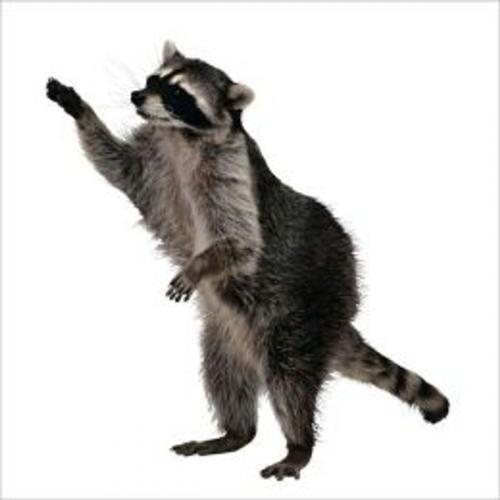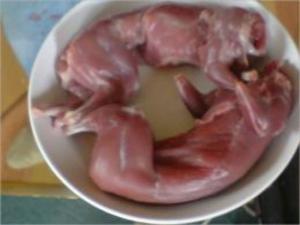Getting Rid of Raccoons
Nonfiction, Home & Garden, The Home, Outdoor & Recreational Areas, Do It Yourself| Author: | Enzo Jones | ISBN: | 1230000101350 |
| Publisher: | Axel Publishing | Publication: | January 21, 2013 |
| Imprint: | Language: | English |
| Author: | Enzo Jones |
| ISBN: | 1230000101350 |
| Publisher: | Axel Publishing |
| Publication: | January 21, 2013 |
| Imprint: | |
| Language: | English |
The raccoon (pronounced /ræˈkuːn/ ( listen), Procyon lotor), sometimes spelled as racoon, also known as the common raccoon, North American raccoon,northern raccoon and colloquially as coon, is a medium-sized mammal native to North America. It is the largest of the procyonid family, having a body length of 40 to 70 cm (16 to 28 in) and a body weight of 3.5 to 9 kg (8 to 20 lb). The raccoon is usually nocturnal and is omnivorous, with a diet consisting of about 40% invertebrates, 33% plant foods, and 27% vertebrates. It has a grayish coat, of which almost 90% is dense underfur, which insulates against cold weather. Two of its most distinctive features are its extremely dexterous front paws and its facial mask, which are themes in the mythology of several Native American tribes. Raccoons are noted for their intelligence, with studies showing that they are able to remember the solution to tasks up to three years later.
The original habitats of the raccoon are deciduous and mixed forests of North America, but due to their adaptability they have extended their range to mountainous areas, coastal marshes, and urban areas, where many homeowners consider them to be pests. As a result of escapes and deliberate introductions in the mid-20th century, raccoons are now also distributed across the European mainland, the Caucasus region and Japan.
Though previously thought to be solitary, there is now evidence that raccoons engage in gender-specific social behavior. Related females often share a common area, while unrelated males live together in groups of up to four animals to maintain their positions against foreign males during the mating season, and other potential invaders. Home range sizes vary anywhere from 3 hectares for females in cities to 50 km2 for males in prairies (7 acres to 20 sq mi). After a gestation period of about 65 days, two to five young (known as a "kit", plural "kits") are born in spring. The kits are subsequently raised by their mother until dispersion in late fall. Although captive raccoons have been known to live over 20 years, their average life expectancy in the wild is only 1.8 to 3.1 years. In many areas hunting and traffic accidents are the two most common causes of death.
Scroll up... and click on "Buy Now" to deliver almost instantly to your Kobo or other reading device.
The raccoon (pronounced /ræˈkuːn/ ( listen), Procyon lotor), sometimes spelled as racoon, also known as the common raccoon, North American raccoon,northern raccoon and colloquially as coon, is a medium-sized mammal native to North America. It is the largest of the procyonid family, having a body length of 40 to 70 cm (16 to 28 in) and a body weight of 3.5 to 9 kg (8 to 20 lb). The raccoon is usually nocturnal and is omnivorous, with a diet consisting of about 40% invertebrates, 33% plant foods, and 27% vertebrates. It has a grayish coat, of which almost 90% is dense underfur, which insulates against cold weather. Two of its most distinctive features are its extremely dexterous front paws and its facial mask, which are themes in the mythology of several Native American tribes. Raccoons are noted for their intelligence, with studies showing that they are able to remember the solution to tasks up to three years later.
The original habitats of the raccoon are deciduous and mixed forests of North America, but due to their adaptability they have extended their range to mountainous areas, coastal marshes, and urban areas, where many homeowners consider them to be pests. As a result of escapes and deliberate introductions in the mid-20th century, raccoons are now also distributed across the European mainland, the Caucasus region and Japan.
Though previously thought to be solitary, there is now evidence that raccoons engage in gender-specific social behavior. Related females often share a common area, while unrelated males live together in groups of up to four animals to maintain their positions against foreign males during the mating season, and other potential invaders. Home range sizes vary anywhere from 3 hectares for females in cities to 50 km2 for males in prairies (7 acres to 20 sq mi). After a gestation period of about 65 days, two to five young (known as a "kit", plural "kits") are born in spring. The kits are subsequently raised by their mother until dispersion in late fall. Although captive raccoons have been known to live over 20 years, their average life expectancy in the wild is only 1.8 to 3.1 years. In many areas hunting and traffic accidents are the two most common causes of death.
Scroll up... and click on "Buy Now" to deliver almost instantly to your Kobo or other reading device.















